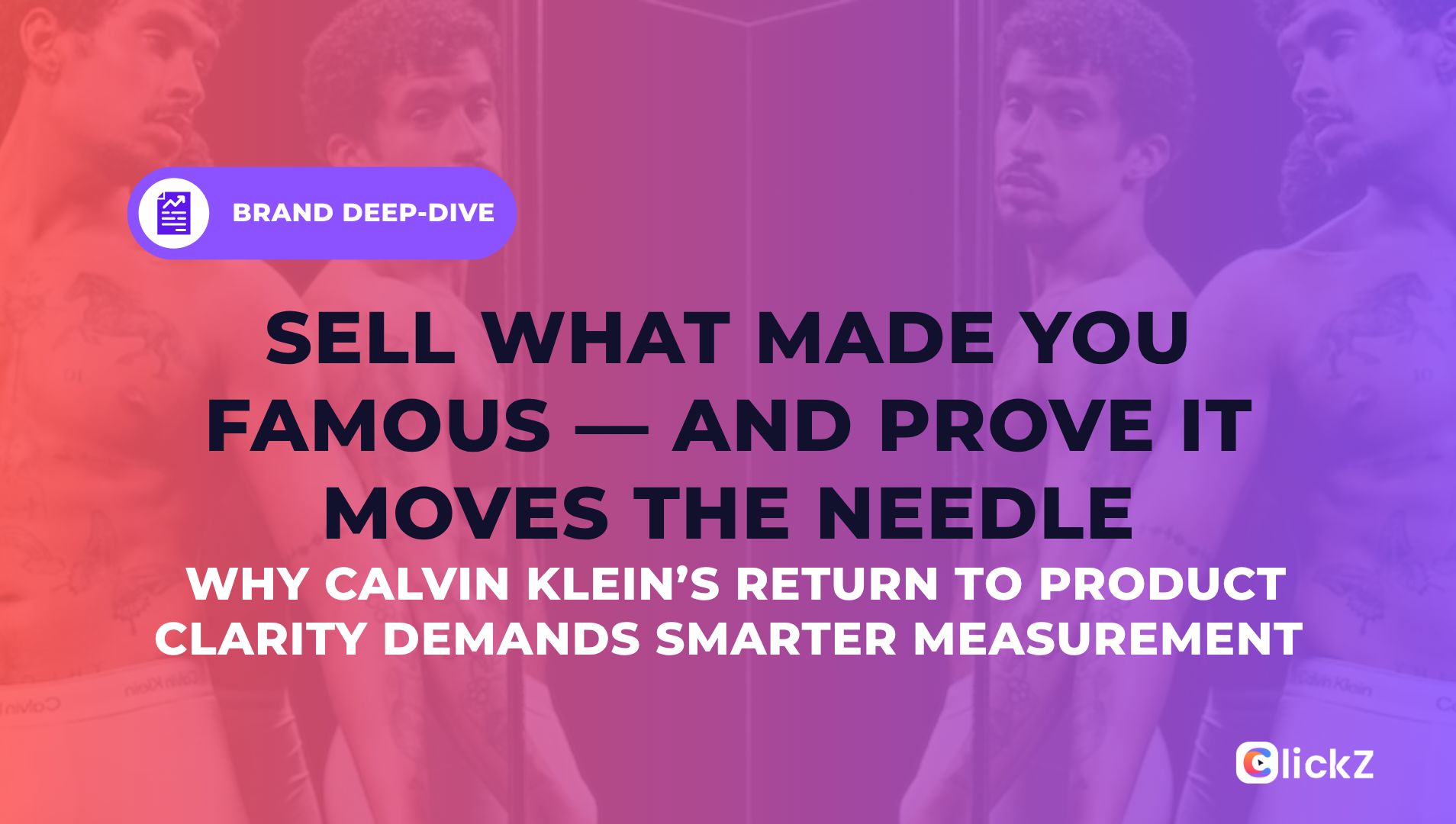- ClickZ
- Posts
- How Marketers Can Build Loyalty with AI-Powered Shopping Agents
How Marketers Can Build Loyalty with AI-Powered Shopping Agents
PLUS: The 5Bs framework by Dave Aaker on branding
Follow us on LinkedIn 🔗
Hi there!
Highlights from today's newsletter:
🚗 Melody Lee (CMO of Mercedes-Benz USA) | Success is Never Solo
📊 For CMOs, the Future Starts with Smarter Spending
🌟 Insights from AMPLIFY Founderverse NYC

EDITOR’S PICK
#BRAND DEEP-DIVE

Calvin Klein is going back to basics—and demanding results.
Under PVH’s reset strategy, the brand is doubling down on the products that made it famous: underwear, denim, and athleisure. Think Bad Bunny in Icon Cotton Stretch and Jeremy Allen White in jeans.
Behind the scenes, Calvin is trimming underperforming channels and ramping up DTC. Every campaign now needs to prove it moves the needle.
For marketers, that means fewer vanity metrics and more accountability. Brand and performance teams must align—and measure what actually drives sales.

ClickZ hit the ground at the AMPLIFY Founderverse NYC this week, sitting in on the sessions that mattered most to marketers. Here are the rounded-up insights
👉 Discover more actionable insights on our LinkedIn page

WHAT WE ARE READING
 | AI shopping agents, unlike humans, lack inherent brand loyalty, necessitating marketers to adapt by understanding these agents' logical decision-making processes. Marketers must focus on optimizing pricing and offering competitive deals, as AI will always seek the best logical outcomes, potentially overriding any pre-coded brand preferences. This shift is crucial as AI-driven purchasing decisions increasingly influence consumer behavior and market dynamics. |

 | The 5Bs framework by Dave Aaker addresses modern branding's adaptation to today's market demands, stressing relevance over mere awareness. This approach guides in leveraging brand equity, identity, loyalty, architecture, and positioning amidst information overload and skepticism. |

 | CMOs must focus on reallocating budgets to improve marketing efficiency and adapt to media inflation, new channels, and economic pressures. By refining spending across working and nonworking categories, companies can achieve 10% to 30% savings, enabling reinvestment for growth. Leveraging AI and advanced analytics is crucial for maximizing ROI and ensuring marketing performance aligns with evolving consumer behaviors and economic conditions. |

WHAT WE ARE LISTENING TO
🎙 THE CMO PODCAST
Melody Lee's journey to becoming the Chief Marketing Officer at Mercedes-Benz USA underscores the evolving landscape of marketing careers. Her initial foray into the field began modestly with a $12/hour internship in public relations. Over the years, Lee transitioned from the agency side to client roles, accruing valuable experience at companies like Cadillac, Shiseido, and MillerKnoll before joining Mercedes-Benz in 2023. This path highlights the importance of adaptability and diverse experiences in ascending to leadership roles within legacy brands.
The conversation, recorded at the Cannes Festival of Creativity, sheds light on the challenges and strategies involved in modernizing an iconic brand like Mercedes-Benz. The focus is on cultivating creative skills while respecting the brand's storied heritage, allowing it to remain relevant as it approaches its 100th anniversary. Lee's experience exemplifies the shifts in marketing strategies required to balance innovation with tradition, ensuring sustainability and growth in a competitive market.


Editorial
Contact an editor to create content for your business.



Reply